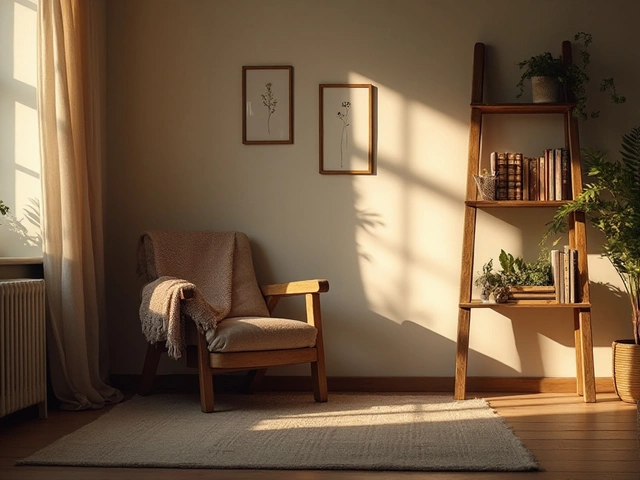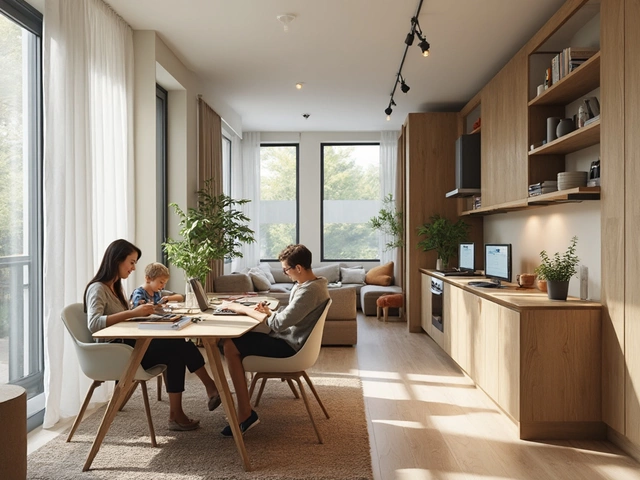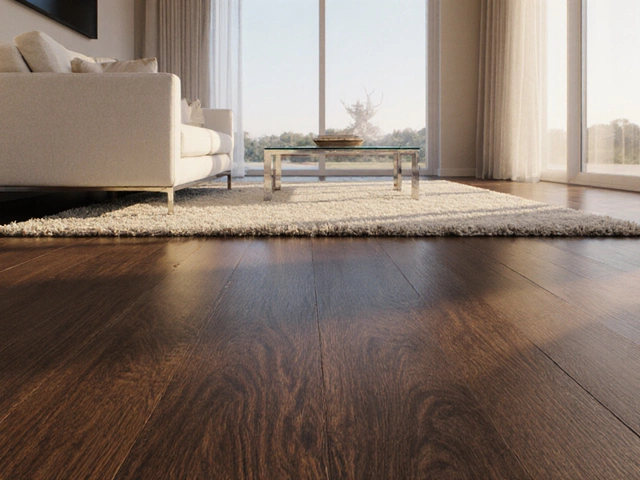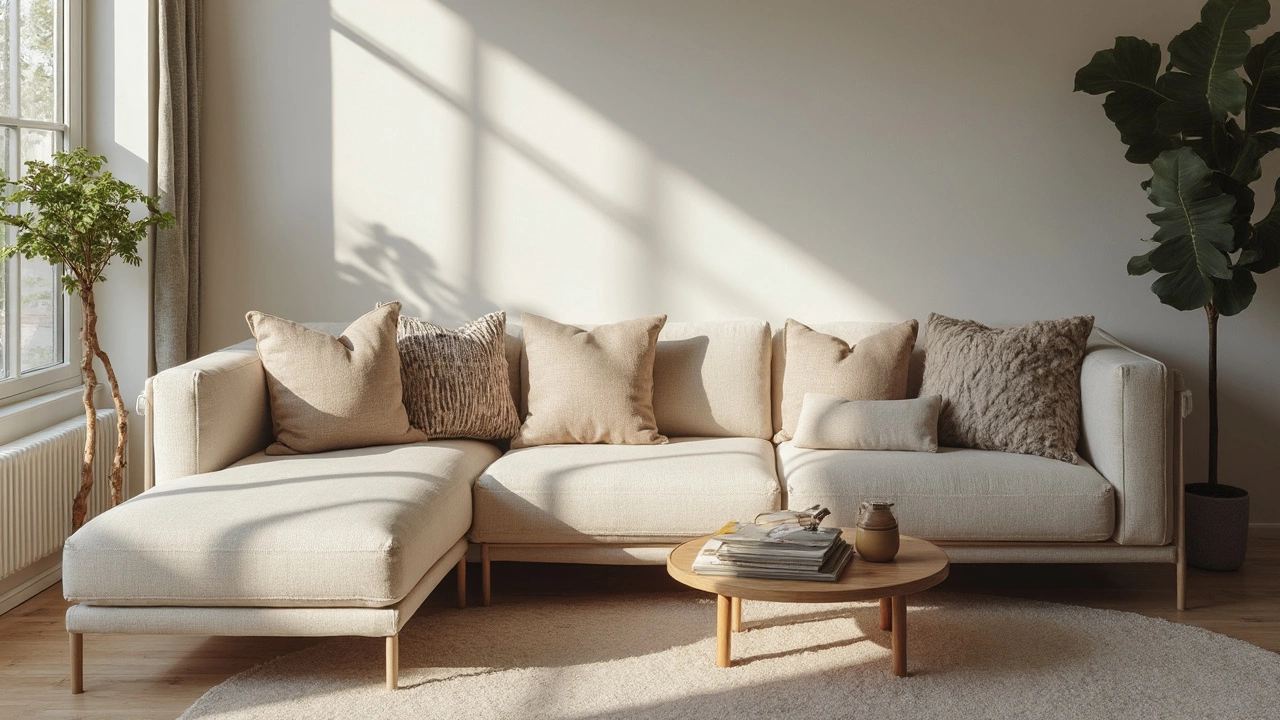
Ever sat down on a sofa and wondered why it either feels perfect, or like you're sinking into a sea of cushions? There really is a sweet spot when it comes to how many cushions you should have—too few and the sofa looks bare, too many and you start losing your remote between the seams.
The basic trick? For an average three-seater sofa, three to five cushions is spot on. Odd numbers just look better. It sounds silly, but design experts have pointed out that odd numbers actually make things feel a bit more relaxed and less try-hard.
If your sofa is smaller, say a loveseat, try sticking with two or three. On a big U-shaped or sectional sofa, you have some wiggle room—five to seven cushions can work, especially if you like to stretch out or have friends over often. You want to balance the look without making it a cushion obstacle course every time you sit down.
- The Goldilocks Cushion Rule
- Factoring in Sofa Size and Shape
- Style versus Comfort
- Practical Tips for Cushion Arrangements
- Pet-Proofing Your Sofa Setup
The Goldilocks Cushion Rule
Finding that “just right” number of sofa cushions is easier than you think. The Goldilocks rule—borrowed from the classic story—basically means you want not too many, not too few, but the perfect amount of cushions for your sofa. Too many, and you’ll spend half your life moving them every time you sit down. Too few, and your sofa just looks sad and unfinished.
The “magic” number for a standard three-seater is three to five cushions. Why odd numbers? They’re easier on the eyes. Designers love odd numbers because they create a more relaxed, welcoming vibe instead of a rigid, forced look. This idea actually comes from basic design rules—our brains are naturally drawn to odd-numbered groups, and it keeps the arrangement from looking too stiff or formal.
Here’s a quick breakdown for different sofa types:
- Loveseat (2-seater): Two or three cushions look tidy but don’t crowd the seats.
- Standard 3-seater: Three or five works every time—add a throw and it feels even cozier.
- Large sectional or L-shaped: Five to seven cushions spread out. Go wild but make sure there’s still space to actually sit.
Ever wonder what other people are doing? In a 2023 living room survey by a high-street furniture retailer, 81% of people said they prefer odd numbers of cushions because it just “feels right.”
Don’t obsess over rules, though. If your sofa is already deep or firm, you might like fewer cushions. If your family loves lounging, add more for extra comfort. Keep the look practical. At the end of the day, you want your sofa inviting for everyone—pets included. (My cat Jasper always claims the squishiest one.)
Factoring in Sofa Size and Shape
The size and shape of your sofa does way more than just decide where you’ll nap. It totally affects how many sofa cushions fit comfortably and look good. Think about it—what works on a boxy two-seater isn’t going to fly on a sprawling L-shaped sectional.
Here’s the deal:
- Small sofas (loveseats): Two or three cushions max. This keeps things tidy and you don’t end up fighting for a seat with your own pillows.
- Standard three-seater: Three to five works. Go with three for a clean, simple vibe or five if you like a cozier, fuller look. Spread them out for balance.
- Large sectionals or U-shaped sofas: Don’t be shy—five to seven cushions actually look inviting here. Place them at the corners and scatter a few along the longer side to break up all that empty space.
Want things even easier? Here’s a quick reference:
| Sofa Type | Cushions Ideal |
|---|---|
| Loveseat (2-seater) | 2–3 |
| Three-seater | 3–5 |
| Sectional/U-shape | 5–7 |
Pay attention to your sofa sets shape too. If your sofa has high arms or a really deep seat, bigger cushions work better—they make it easier to sit upright. On slim, shallow sofas, bulky pillows just swallow up space and look out of place.
Decide where your sofa sits in the room as well. If it’s up against a wall, you can line up cushions all the way across. When your sofa floats in the middle of a room, too many can look messy from all sides. Less is more here to keep things neat.
Bottom line: the right number of sofa cushions depends on your sofa’s size and what you actually use. You shouldn’t have to move a pile of pillows just to find a spot for yourself, your coffee, or even your cat—Jasper would 100% agree with that one!
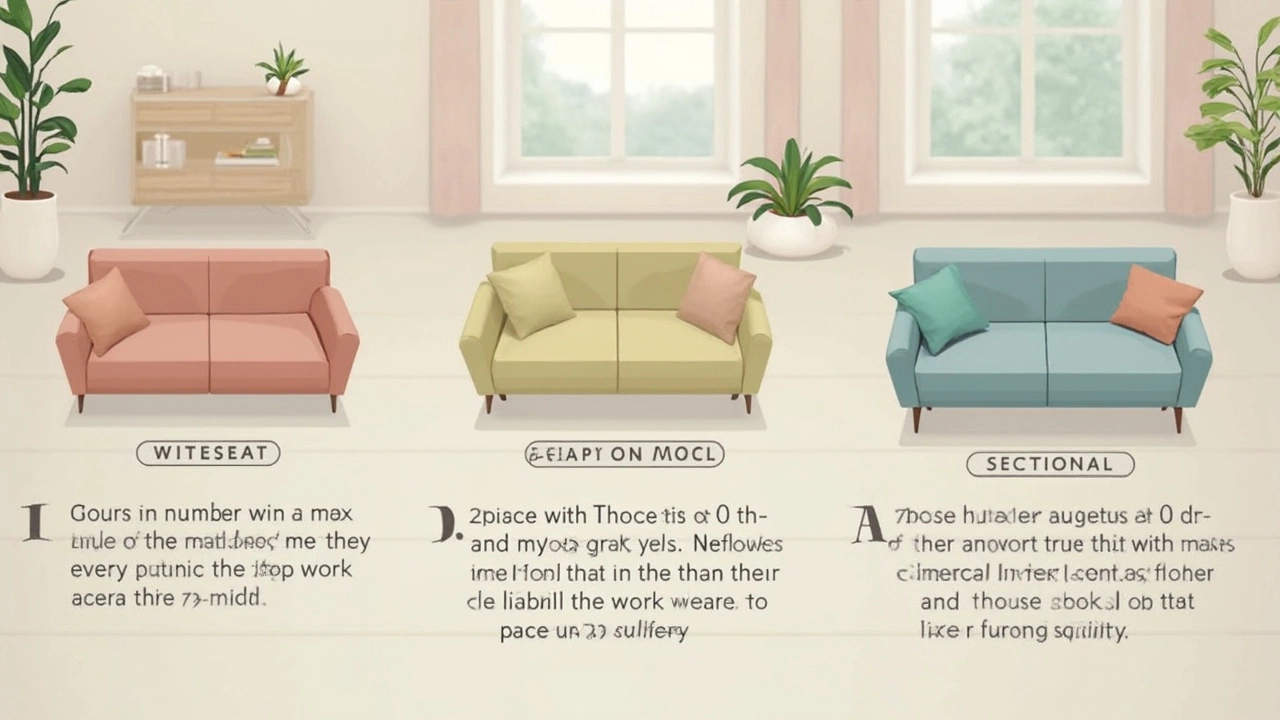
Style versus Comfort
Ever feel torn between making your sofa Instagram-worthy and actually wanting to sit on it? That's the real challenge with sofa cushions. Too many flashy pillows might look great in photos, but they can be a pain every time you have to dig out a spot to sit. On the other hand, not enough cushions and your sofa can feel unfinished or stiff, kind of like a waiting room chair.
If you care about that stylish, pulled-together look, using cushions in different sizes and textures helps a lot. Designers often suggest mixing one or two solid colors with a fun print. As a bonus, odd numbers usually just look better. Layer bigger cushions on the ends, and pop smaller ones in the middle for an easy, polished vibe.
But comfort matters too. Pay attention to what's inside the cushion—down or feather fills are soft and squishy, but they flatten and need fluffing. Synthetic fills like polyester bounce back better and need less maintenance. If you want support, pick firmer, foam-filled cushions that don’t just disappear when you lean back, especially on busy family sofas.
Here’s a quick breakdown of popular cushion types and how they feel:
| Type | Feel | Style Factor |
|---|---|---|
| Down/Feather | Super soft, needs fluffing | High-end, relaxed |
| Polyester | Medium soft, bounces back | Casual, easy care |
| Foam Core | Firm, holds shape | Structured, modern |
One smart tip—test your own sofa set up. Sit down, lie back, and see how it feels. If you find yourself tossing half the pillows on the floor just to stretch out, you probably have too many. If your back aches and the sofa looks plain, toss on one or two more for both support and style points.
Remember, the best sofa cushion set-up is one that works for your everyday life, not just a magazine shoot.
Practical Tips for Cushion Arrangements
When you’re figuring out how to arrange cushions on your sofa, keep it real—nobody wants a setup that looks great but feels awkward, or hides every snack and remote. Sticking to a few smart basics, though, makes your sofa cushions work for both comfort and style.
- Start with the largest cushions at the back or corners. These help anchor the look and support your back.
- Add medium-sized cushions in front or toward the middle. These let you mix in some color or patterns without going overboard.
- Throw in one or two small accent cushions for a pop of character. This is your chance to use something bold or textured if you like.
Try not to line up all your cushions like soldiers. Instead, go for a slightly off-center or layered effect. Overly neat rows can feel stiff, but stacking by size lets you lean back comfortably while still looking put together.
If you’re someone who hates constantly moving cushions around, stick with fewer, larger ones. They’re less fussy and often stay in place even if you’re hopping onto the sofa with a bag of chips.
Want a quick cheat sheet? Here’s what you’ll usually see in real homes:
| Sofa Size | Suggested Number of Cushions | Arrangement Example |
|---|---|---|
| Loveseat (2-seater) | 2-3 | One on each end, or two big ones + one accent |
| Standard Sofa (3-seater) | 3-5 | 22” at corners, 18” in middle, plus one small bright cushion |
| Sectional/U-shape | 5-7 | Pairs on each end, a couple in the middle, one statement cushion |
Mixing textures—like cotton with velvet, or leather with linen—can keep things interesting without looking chaotic. And don’t forget: cushion covers are easy to swap out with the seasons, or when the cat throws up on one. Trust me, as Jasper’s owner, that tip is gold.
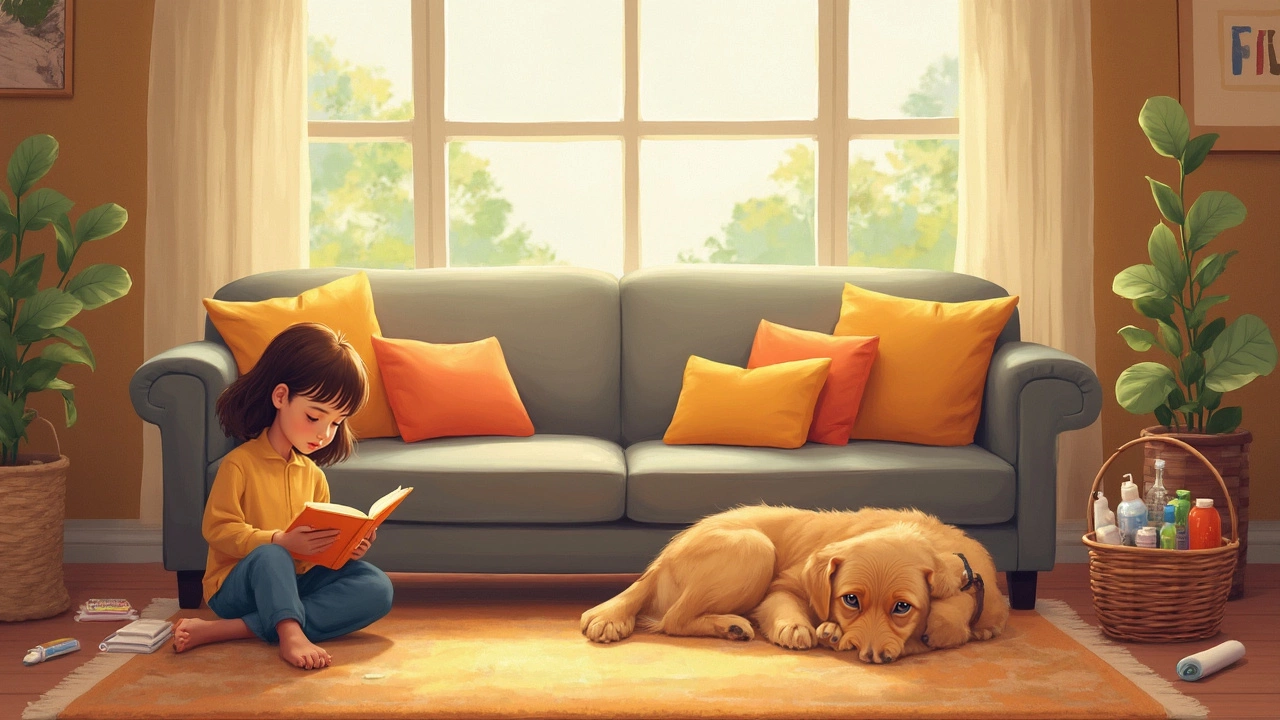
Pet-Proofing Your Sofa Setup
If you’ve got a pet like my curious cat Jasper, you know those sofa cushions are more than just decoration—they’re a target. Cat fur, muddy paws, and the occasional digging make picking and arranging cushions a real strategy.
First things first: fabric matters. Choose cushion covers that are tightly woven (like microfiber or canvas). They’re way easier to keep clean and fur doesn’t stick as much. Skip velvet or chenille if you want less vacuuming. Leather is another solid choice, since hair and crumbs wipe right off, but it can get scratched—especially if your cat loves to knead.
You’ll also want to go for removable, zippered cushion covers. These are a game-changer when it comes to quick washes. Trust me, after Jasper decided my sofa was his new nap oasis for a week straight, being able to toss the covers in the wash saved a ton of hassle and kept things looking sharp.
Let’s talk cushion arrangement. Tuck the more expensive or light-colored cushions toward the back or middle, and use darker, tougher fabrics on the outside. This helps hide paw prints and little scratches—plus, pets tend to flop on the outer edges anyway.
- Use a lint roller or vacuum regularly to keep your sofa cushions looking neat.
- Try adding a washable throw over high-traffic spots for extra protection (and easy cleaning).
- If you’ve got a dog that chews, consider going cushion-light and opting for denser, chew-resistant foam inside your covers.
Fact: According to a 2023 pet owners survey, about 68% said washable covers were the single most helpful detail in keeping their sofa cushions looking good. That matches my real-life experience, and it's so simple to handle.
One bonus: put a tiny catnip toy or two elsewhere in the room. Redirects the feline attention off your best sofa cushions—at least for a few minutes!

